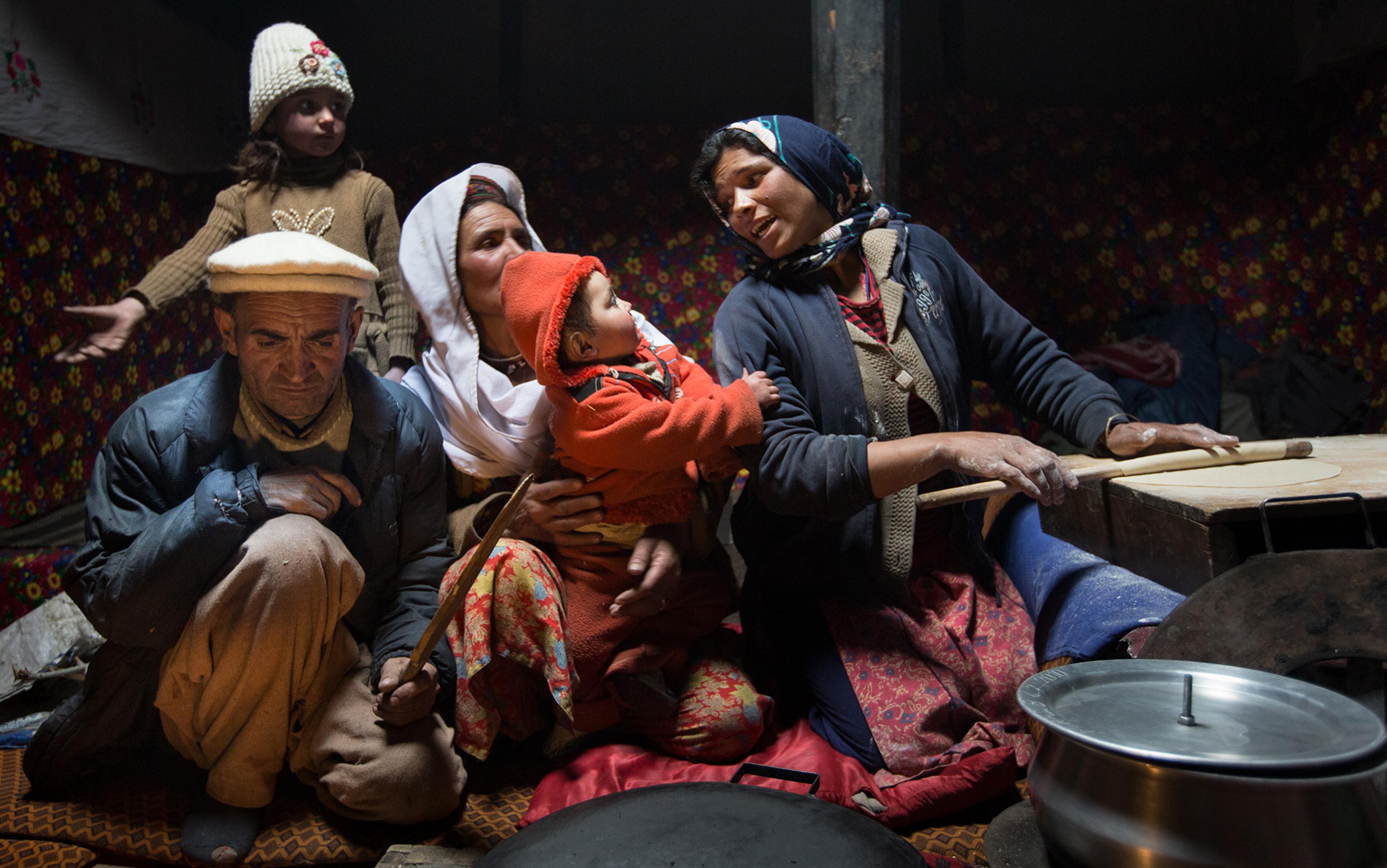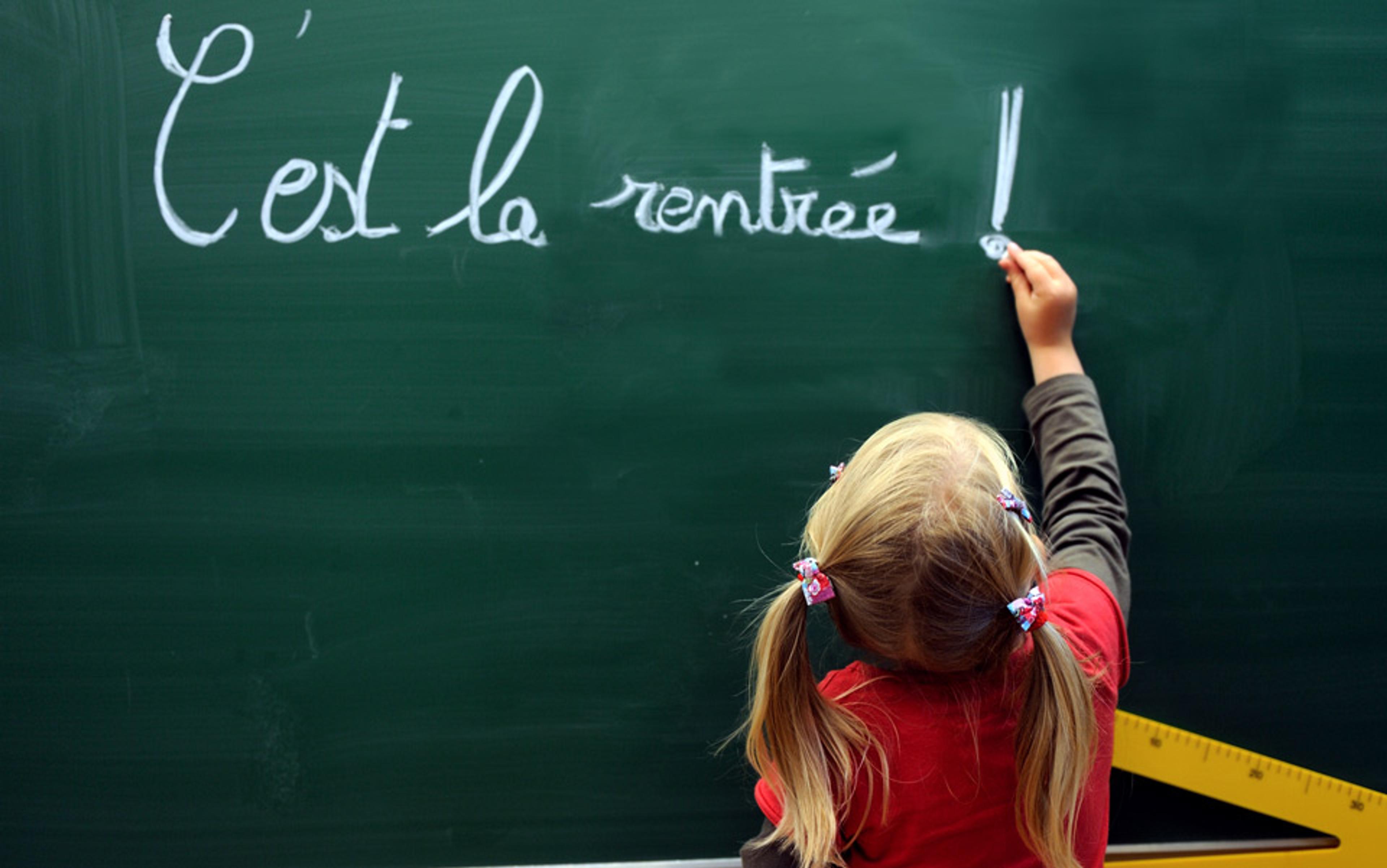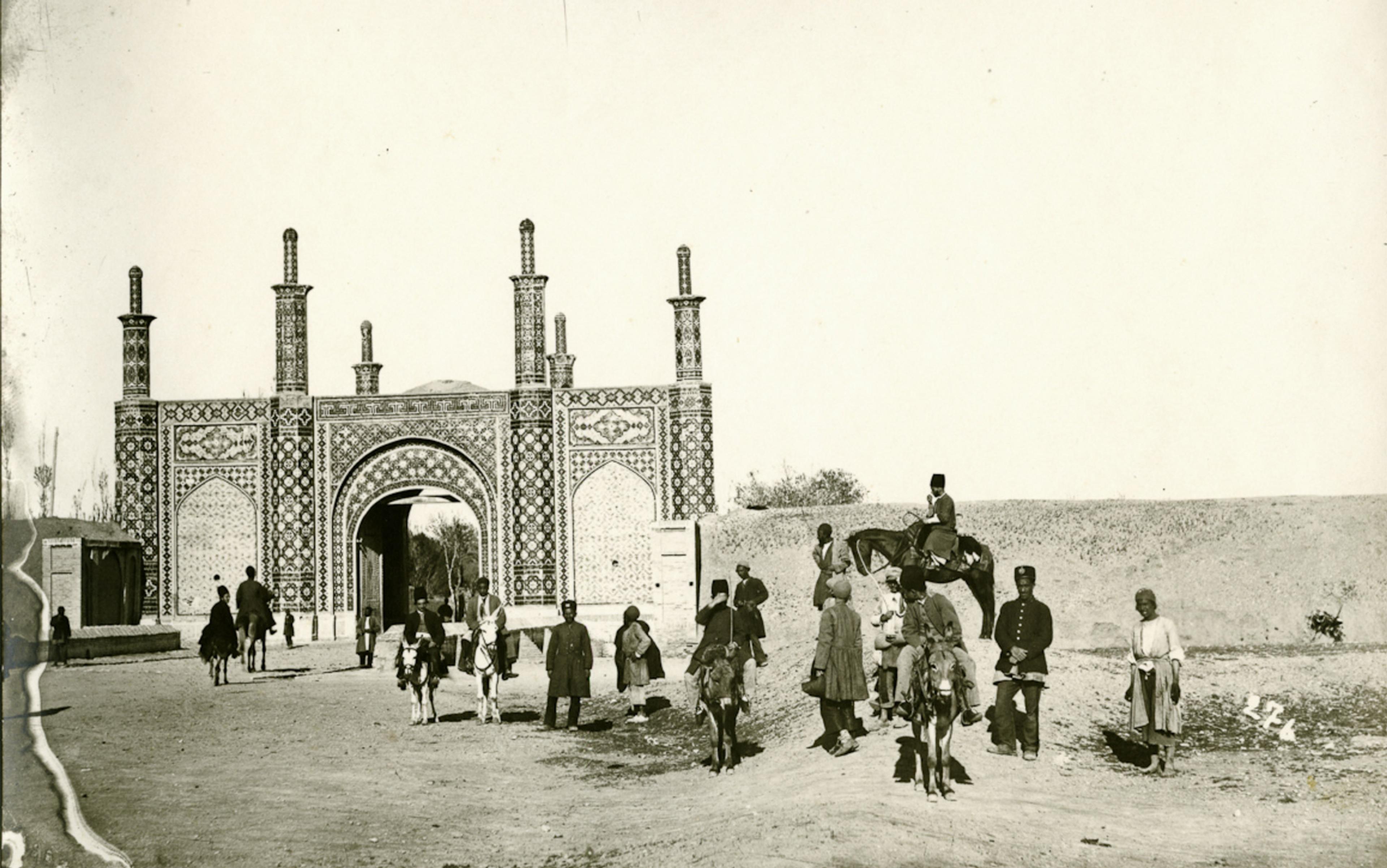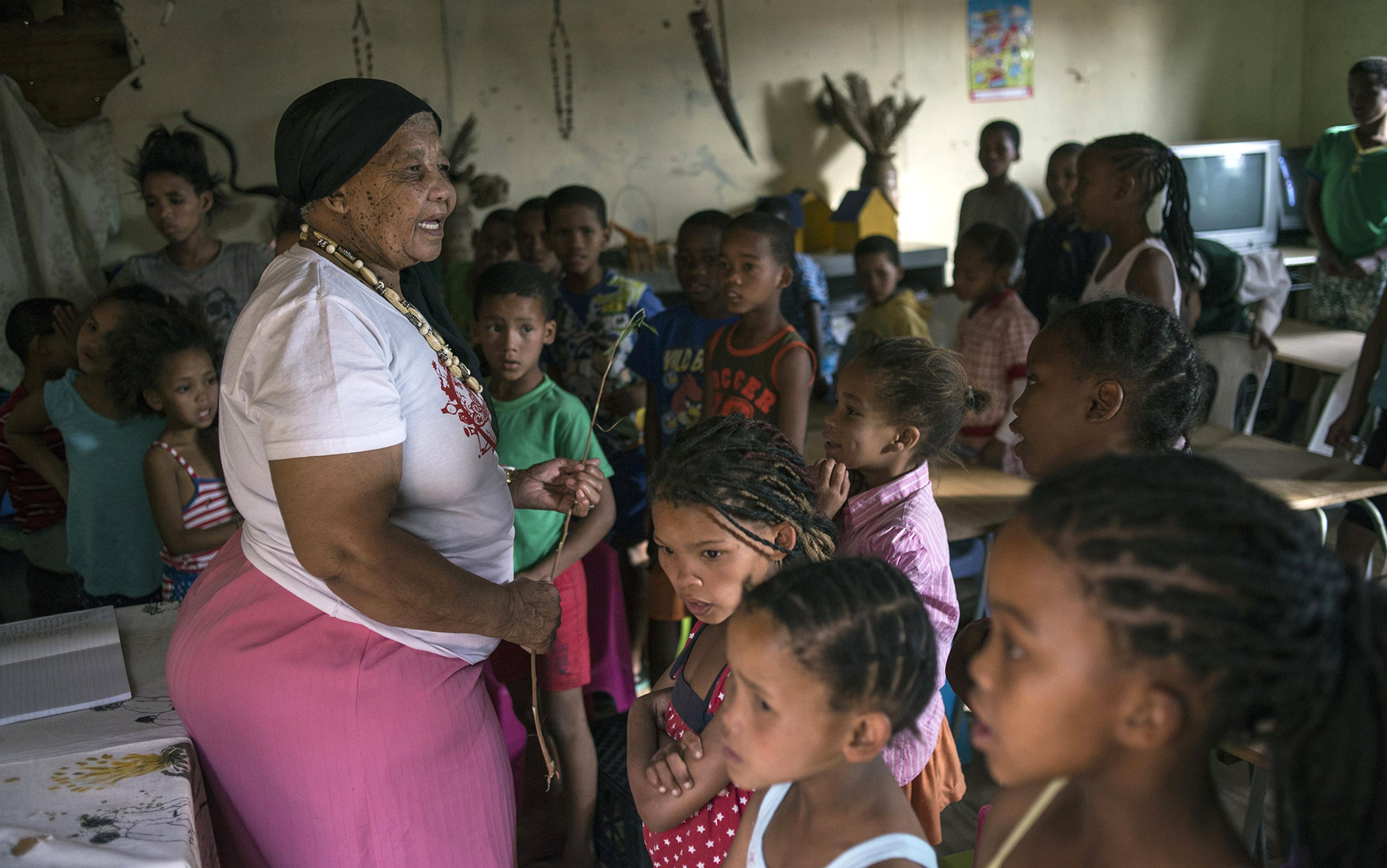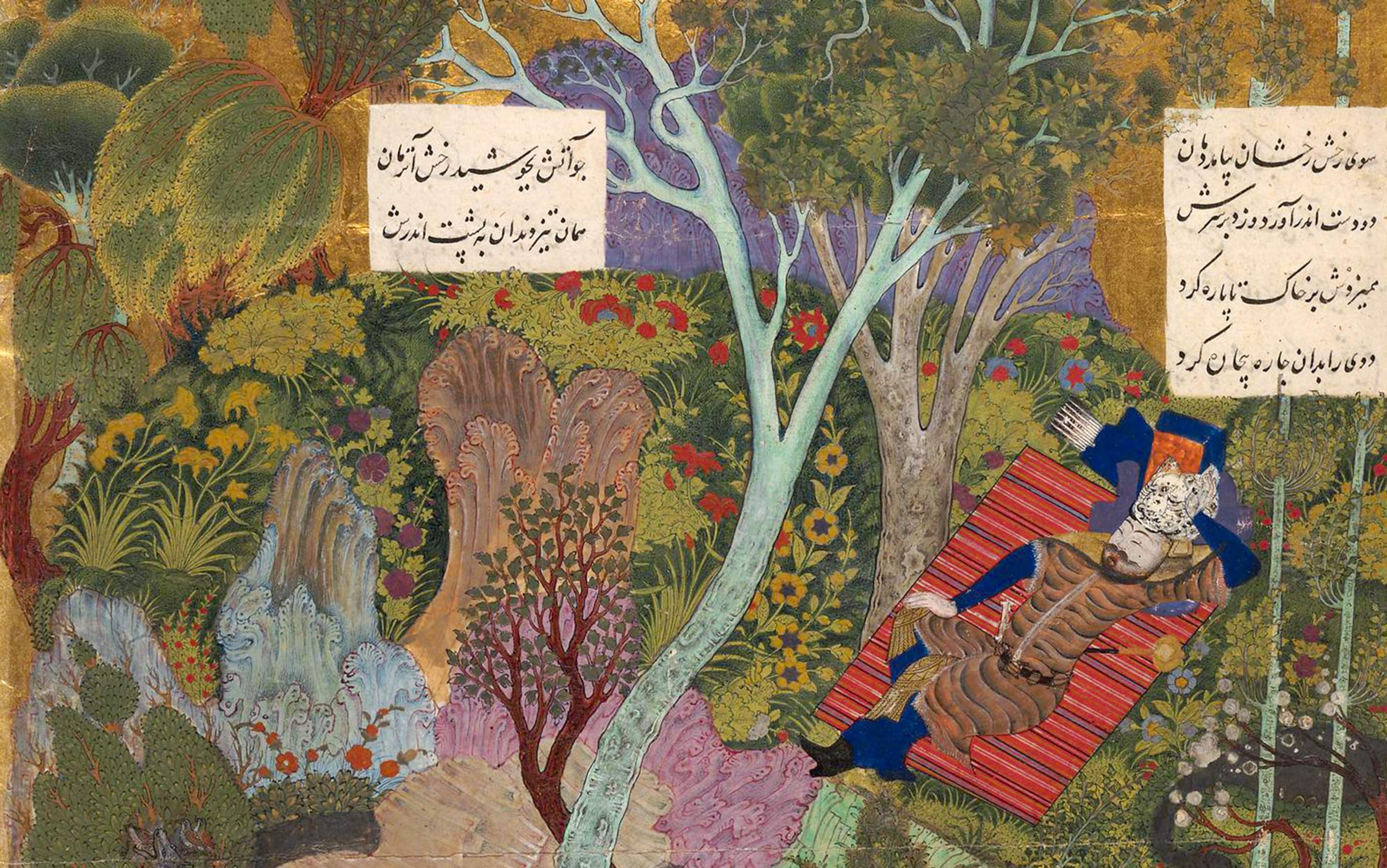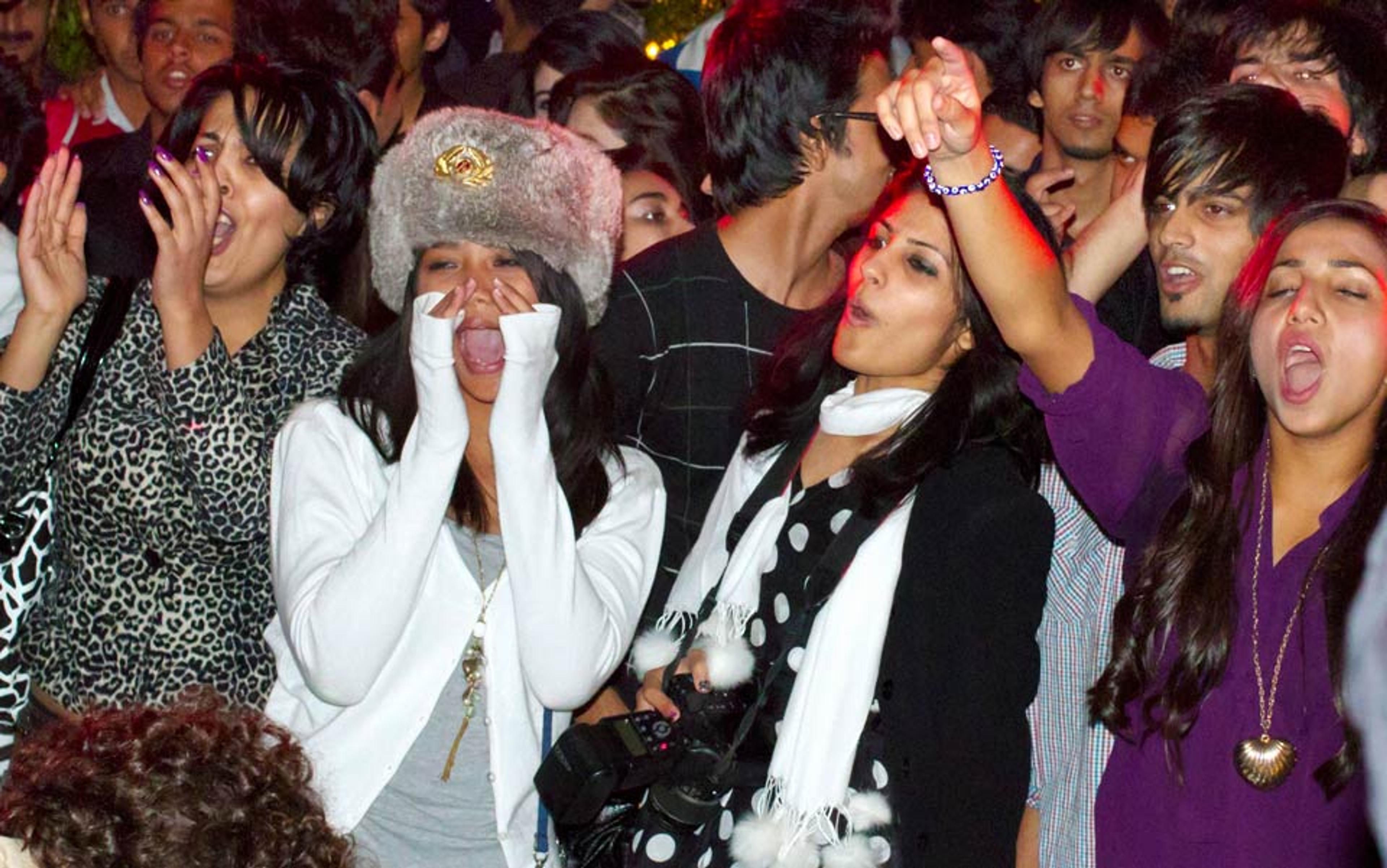Dardistan is one of the most diverse linguistic regions in the world. In the 1930s, the Norwegian linguist Georg Morgenstierne called it one of the most polyglot parts of Asia. More recently, the Italian anthropologist Augusto Cacopardo has called it ‘Peristan’, an area with an ‘enormous diversity of tongues and cultures’. The region has the large Dardic languages such as Kashmiri, Shina and Khowar on the one hand and, on the other, it is home to the Burushaski language, which could not be placed within any language family because of its unique features. The Nuristani, formerly Kafiri, languages are spoken here, too. There are minor languages such as Kalasha, spoken by the Kalash community of hardly 4,000 people who still follow the ancient animistic religion that was once practised across Dardistan.
The name ‘Dardistan’ describes the area comprising the highest mountain ranges of Hindu Kush, Karakoram, western Himalaya and the Pamir mountains, and includes northern Pakistan, parts of Eastern Tibet in China, eastern Afghanistan and the Kashmir valley on both sides of the Pakistan-India border.
Dardistan’s enormous linguistic diversity occurs despite the fact that, culturally, the area is fairly homogeneous. Cacopardo says there is no match for this region in terms of linguistic and cultural diversity, except the Caucasus. Though, of course, minor differences exist, the same religious rituals and religious pantheon prevailed among the polyglot peoples of Dardistan.
The many languages spoken here, though mostly belonging to the Indo-European family, still more narrowly to the Dardic sub-family within the Indo-Aryan group, are so different from each other that the people of one linguistic community have to rely on a third language, Pashto or Urdu, to communicate with members of another community. For instance, the people belonging to the Torwali and Gawri communities of the upper Swat valley in Pakistan need Pashto to converse with each other. This is despite the fact that the Torwali and Gawri languages are ‘sister languages’ and seem to have evolved from one single language a few centuries ago when Swat was taken over by the Yousafzai Pathans in the 16th century.
In 1986, the Summer Institute of Linguistics in collaboration with the National Institute of Folk Heritage, Lok Virsa, and the National Institute of Pakistan Studies at the Quad-e-Azam University in Islamabad, undertook a survey of the languages of northern Pakistan. Published in five volumes, this Sociolinguistic Survey of Northern Pakistan (1992) documented 25 languages. In fact, there are even more – at least 35 – languages in north Pakistan, namely Badeshi, Bateri, Balti, Brokskat, Burushaski, Chilisso, Dameli, Domaaki, Gawar-Bati, Gawri, Gowro, Gujari, Hindko, Kalasha, Kalkoti, Kamviri, Kashmiri, Kativiri, Khowar, Kohistani, Kundal Shahi, Kyrgyz, Madakhlashti, Mankiyali, Ormuri, Pahari, Palula, Pashto, Sarikoli, Shina, Torwali, Ushojo, Yadgha, Wakhi, and Waneci.
In his paper ‘India as a Linguistic Area’ (1956), the linguist M B Emeneau uses the phrase ‘linguistic area’ as a technical term to mean an area that includes languages of more than one family sharing some common traits with one another, but not all the linguistic features are alike among the language families. More recently, the Swedish linguist Henrik Liljegren has spent the past two decades conducting research on the languages of the northwestern fringe of the Indian subcontinent. His comparative study ‘The Hindu Kush–Karakorum and Linguistic Areality’ (2020) offers one definition of ‘linguistic area’ as ‘a geographical area with well-defined and neat boundaries within which all or most of the languages, regardless of phylogenetic identity, share a significant number of unique features that have arisen as the result of contact’.
At the same time, Liljegren suggests that this part of the world is not a ‘linguistic area’ in that conventional meaning. Instead, he argues that the Hindu Kush–Karakorum (HK) – also known as Dardistan – is a ‘linguistic area’ in the sense that it is a ‘convergence zone with a core that shares certain linguistic features’ as a result of a prolonged period of contact with other subareas whose languages do not share all the features of HK yet display some other ‘micro-areal convergence’.
Writing a century earlier, Morgenstierne was correct to claim that the region is among the most linguistically diverse in the world. Presently, about 50 languages are spoken here. Despite the Islamisation ongoing since the 16th century, the region has maintained this linguistic diversity but it is under grave threat. Dardistan is at the crossroads of South Asia and Central Asia. It is mountainous and makes for very hard travelling. Its mountain valleys remained isolated, beyond the reach of the invaders during the Islamisation, political domestication by Asian nation-states or colonisation by Europe. It is perhaps thanks to Dardistan’s mountainous geography that we still find such a rich array of languages from different linguistic phyla here.
It is undoubtedly one of the most multilingual places on planet Earth
Dardistan is home to six language groups: namely Indo-Aryan, Iranian and Nuristani (all branches of the Indo-European language family), as well as Turkic, Sino-Tibetan and Burushaski. The Indo-Aryan phylum is the largest, including about 30 languages that have also been lumped together as ‘Dardic’ (North-Western Indo-Aryan) by linguists and chroniclers including John Biddulph in the 1880s, Sir George Abraham Grierson in the 1920s and Morgenstierne in the 1930s. The second-largest group is made up of the Iranian languages, which are spread over the territories of several countries: Afghanistan, China, India, Pakistan, Tajikistan, Kyrgyzstan, Turkmenistan and Uzbekistan. More than 30 of the 50 languages spoken in the parts of Dardistan that include Pakistan, India and Afghanistan come from this group. My work as an ethnographer and linguist has focused on north Pakistan, which includes all the languages from the five phyla, plus Burushaski.
North Pakistan is a spectacular mountainous land of immense linguistic, ethnic and geographic diversity. It is undoubtedly one of the most multilingual places on planet Earth. Over many centuries, the movement and contact of people at this crossroads of Central and South Asia have left a complex pattern of languages and dialects. By north Pakistan, I mean the region of Gilgit-Baltistan, the upper parts of Pakistan’s northwest province, Khyber Pakhtunkhwa, including the districts of Chitral, Dir, Swat, Buner, Shangla, the upper Hazara division, and the part of Kashmir Vale under Pakistan’s control. In terms of area and population, north Pakistan covers more land and has more people than Austria and Switzerland put together.
According to Ethnologue, an informative annual compendium of the world’s languages, Pakistan now has 77 living languages spoken within its territory. Past attempts at profiling the languages of what is now Pakistan have been done by foreign researchers either associated with the colonial British government or with international organisations. In the 19th century, Gottlieb Wilhelm Leitner did some linguistic and anthropological work in these areas, resulting in the publication of his book The Languages and Races of Dardistan (1877). Biddulph, an officer in the British army, also did monumental linguistic and anthropological work here with his Tribes of Hindoo Koosh (1880). Grierson, an Irish linguist and language scholar who had also served in the Indian Civil Service, had his Linguistic Survey of India – a seminal work of 19 volumes – published after conducting research on 364 languages over four decades, from 1894 to 1927. He was interested, too in the languages spoken in this mountainous region of north Pakistan.
Over the past century, the languages of northern Pakistan and Afghanistan have continued to attract attention from anthropologists and linguists, including the aforementioned Morgenstierne (1892-1978), as well as the Austrian scholar Karl Jettmar (1918-2002), the Norwegian ethnographer Fredrik Barth (1928-2016) and many others.
None of Pakistan’s governments nor a university has ever taken any initiative in profiling the languages spoken by the people of Pakistan. Only a few – Urdu, Pashto, Punjabi, Balochi, Sindhi and Saraiki – are mentioned in any media, teaching materials and in any kind of national database. It is, therefore, difficult to estimate the exact number of speakers of each language because none of these languages has been counted in the six national censuses so far conducted in Pakistan. The number of speakers of these languages may vary from a few hundred to a million. Many are also spoken in Pakistan’s neighbouring countries – Afghanistan, India and China.
All these languages are categorised as ‘endangered’ in the Routledge Encyclopedia of World’s Endangered Languages (2007) edited by Christopher Moseley. Many of them are ‘severely endangered’ whereas a few are ‘moribund’ or already ‘extinct’.
Description of the 35 languages spoken in north Pakistan is not possible given space constraints. But below I provide vignettes on six of these languages:
Burushaski
Burushaski is the single ‘language isolate’ in Pakistan as it has not been classified under any of the major groups or subgroups of languages. It is not related to its neighbouring languages, ie, Dardic or Iranian. One striking theory puts Burushaski in the category of the Caucasian languages and with Basque. It is spoken in the districts of Hunza, Nagar and in the Yasin valley in the Ghizer district of Gilgit-Baltistan in Pakistan and by a small population in Srinagar in Kashmir. The Yasin variety of Burushaski is sometimes called Werchikwar, probably by the local Khowar speakers, while in Nagar the variety of Burushaski is also known as Khanjuna. Burushaski is said to be the oldest language of the area before the Indo-Aryan migrations. The people who speak it are known as Burusho. A considerable number of Burusho people live in Karachi as well.
Wakhi
Wakhi is an Iranian language. In Pakistan, it is mainly spoken in Gojal, Hunza in the Gilgit-Baltistan region. However, a small number of Wakhi-speaking people also live in the Yasin valley in the Ghizer district of Gilgit-Baltistan. It is also spoken by a small population in the Yarkhun valley of Chitral, Khyber Pakhtunkhwa.
The name Wakhi derives from Wakhan, the narrow corridor of Afghanistan’s province of Badakhshan, which separates Pakistan from Tajikistan. The Wakhan area is said to be the original homeland of the Wakhi people and their language. The Wakhis in north Pakistan migrated to their present locations from the Wakhan region during the 18th and early 19th centuries. In addition to Pakistan and Afghanistan, Wakhi speakers are also found in the adjacent parts of Tajikistan, and in the nearby Sarikol area of China.
Kalasha
Many people in Pakistan and abroad are familiar with the unique Kalash people living in three valleys in Chitral. Kalasha is the language of these people and it is a Dardic language. The Kalash country is called Kalashadesh, while the language is known as Kalasha or Kalashamon. The Kalash people are concentrated in several small valleys on the west side of the Chitral River south of Chitral town: in the Rumbur, Bumboret, Birir and Urstun valleys of Chitral district in Khyber Pakhtunkhwa. The present Kalasha religion is the last vestige of the ancient belief systems that people practised in the whole of Dardistan. The nearby Nuristan province in Afghanistan had similar religious beliefs till 1895 and their forced conversion to Islam. When Kalash people convert to Islam, they not only cease to practise their religion but also leave their language behind. Some past studies suggested the Kalash people were of Greek descent, and maintained that they were remnants of Alexander the Great’s army, but later anthropological genetic studies dismissed such claims and found the Kalash to be one of the old Dardic communities that still retains animistic religious practices, once common across Dardistan, irrespective of linguistic and ethnic denominators. The present estimate of all Kalasha-speaking people is said to be hardly 4,000.
Khowar
Khowar is a major Dardic language and the primary language spoken in Chitral. It is also spoken in certain villages and valleys in the Ghizer district of Gilgit-Baltistan. It is perhaps the single Dardic language in Pakistan that had some sort of state patronage when Chitral was a princely state. Interestingly, Khowar has no dialect, and mostly remains the same in the entire area of Chitral and Ghizer. Morgenstierne relates the homogeneity of the language to the continuous transfer of peasants by the ruling family from one part of Chitral to another, while the French scholar Gérard Fussman (1940-2022) looks at how the sons of the noble Kho families were raised by others than their own. Khowar is greatly influenced by Iranian, perhaps due to past rulers and immigrants from Central Asia. Morgenstierne states that, although Khowar has been strongly influenced by the Iranian languages to the west, its general structure is purely Indo-Aryan. Khowar is perhaps the single Dardic language to be studied by South Asian and local scholars as well as by the Europeans.
Shina
Shina is the major language of Gilgit-Baltistan. Among all the Dardic languages, there is much research literature found on the Shina language and its speakers. It is spoken in Gilgit city, Puniyal, in villages of the Ghizer district, in the Shinaki area connected to Hunza, and in the Astor and Diamer districts of Gilgit-Baltistan. It is also spoken in the eastern Kohistan region, on the eastern side of the River Indus in the Kohistan area of Khyber Pakhtunkhwa. Shina is the Dardic language with a wide range of dialects and distinct affiliated languages such as Palula, Kalkoti, Ushojo and Brokskat, which have, over time and because of isolation, developed into distinct languages. Shina speakers are among the Dards who had many legends and myths, and used to practise shamanism with the help of specialised men called Danyal. Some forms of shamanism still exist in certain areas where the Shinaki people live.
Torwali
This Dardic language of the Indo-Aryan family is spoken in the Bahrain and Chail areas of District Swat in northern Pakistan. According to some estimates, based on surveys from 2016, the Torwali people count themselves as more than 120,000, while recent research, based on an analysis of the Pakistan National Census of 2017, puts the number of speakers of the Torwali language at around 130,000. Possibly 40 per cent them have permanently migrated and settled in the big cities of Pakistan. Torwali has a rich tradition of oral literature in the form of songs, folktales and poetry. About 70 per cent of the poets of these traditional songs used to be women as indicated by the poetic custom of the little-known ʐo couplets of the past 80-100 years. Phal, another poetic genre, was also very common in Torwali. Now, Torwali poetry is thriving once again thanks to its many young poets and singers but, unlike in the past, it has very few women practitioners.
Below, I present folk songs in four of these languages, with a free English translation by myself, based on earlier translations by others, including Aziz Ali Dad and Zahoor ul Haq Danish. Links to an audio or video of these songs are also provided.
These folk songs carry the local metaphor blended into the local ecology – which is the highlands, full of snow, flowers, fairies and demons. Themes of loss, love and yearning go into these songs. The lover is a wildflower, a mountain stream of azure water, a tree or black ice. Life is a moorland full of heathers. It is the hard-dried soil of winter. The beloved is a spring, cold water or a bird.
Shina song: ‘Mai Hiyo Aldaha’ (My Fond Heart)
The moment I hide thee in me,
Illusory images shroud me.
The moment when I show up thee in me,
Your story becomes a talk of all the vicinity.
I have concealed all your charms
Like the old butter in a chasm.
I do have a heart utterly exuberant
And with pain I push it under restraint!
If the love for thee in my heart is open burst,
The hard earth under my feet will turn to dust!
Roasted like kebab, I am in love for thee.
My head spews smoke from the smoulder inside me!
I fused my soul with that of thee,
And have been left with no entity!
A glimpse of thee makes my heart glee!
And not seeing thee is being in a painful dark grave for me!
But I have kept gleaming the lamp of hope in me!
The folks have hampered the world for me,
And made the heavens out of reach for me.
Even they have halted the eye contact between me and thee!
But I have kept my heart full of memories of thee.
I do have a heart utterly exuberant
And with pain I push it under restraint!
Torwali songs: ᶎo couplets
Entire Torwal knows how I conceal my love, Aunt.
I will wear this sweet shawl on my head, just as it was meant.
There is nothing of more value than the clean climate of our country
The flowers of the highlands overwhelm us with their beauty.
If he was a green tree I would take shade beneath him.
Everyone says the earth dries there, and I remain in the sun.
The angel of death is like a gardener who comes plucking flowers.
He chooses and takes the purple-flowered mamera from each of us.
My love, you made a marriage for yourself, a hundred hurrahs!
I am like the dead, remember me in your prayers.
Poverty does not make one’s descent worthless.
My love, you are a pearl lost to the ocean’s depths.
My love, the shroud of my lap gathers my tears.
If they fall to the earth, they would cause forest fires.
I am like the spring that breaks from black ice.
Come here to drink, my love, quench your thirst.
My beloved is the purest mamera of the highest peak.
I will not wear this in my hair for fear it will break.
My heart is like a creeper that wraps around a tree.
Take this axe whether spare or cut my head from me.
Hussain Zeba, all these glaciers melt alike.
Show me the spring from which to drink.
How to fall in love is something I can teach:
A bread is cooked on both sides with fire burning beneath.
Burushaski song: ‘Jee Ye Sar Dawa Saba’ (Painful Thread of Life)
Thou showed a beautiful world
And became my companion in adversity!
My life is hung by a thread!
Accompany me in this tedious journey.
I long for a glimpse of my beloved,
My life is hung by a thread!
This world is so disloyal,
Where faithful men are not loved.
I long for a glimpse of my beloved.
May God my enemies be ruined!
For much they have excruciated me.
And these brutal people don’t have the least empathy,
And no care for a heart wounded,
My life is hung by a thread!
Like the beautiful spring were the past years,
Alas! now the times are of fruitless love.
Accompany me in this tedious journey.
My life is hung by a thread!
I long for a glimpse of my beloved.
Khowar song: ‘Ashoor Jan’ (My Soulmate)
All kings, either Alexander or Darius,
With all their honour and glory,
Splendour and dignity,
Could not match thee!
And thy abode is more beautiful
Than all cities of the world, even than the noble Bukhara.
Had I got a sight of thee,
I’d have given away all the riches I had!
And would come to celebrate the festivity.
I had once a chance of that spectacle, unique and enchanting.
What a surprise that was! Thy yard was full of roses blooming!
Those eyes and brows were gleefully at play,
Those lips and teeth were in fight to murmur.
Ahah, what a splendid image that was!
O, love, how could it be
I would have come to thy country!
If ever I do, thy countrymen
Suspect and fear me!
If I were a flowing stream in thy way,
Rather than in anguish thus to decay!
That thou, my love, take sips,
From me with thy sweet lips!
To live in love is to be a thorny offshoot in a moorland:
Struck by the gusts of yearning,
Scorched in the sun of woes always burning.
Its leaves are desiccated, and roots decayed!
Oh, curse be on the day!
When I happened to be in thy valley.
Where I heard the news full of torture,
That told of thy departure!
Once I turned up into the yard of my sweetheart,
There was commotion and clamour around.
Amid this pandemonium was my love fixed to a door apart,
Helpless, shedding tears for my pitiful destiny.
Secluded now I am, devastated and forlorn!
Alas, I am helpless like an ant or fly!
Oh, my love, come, rescue me, even it is for a while,
With thy sweet company.
Let the foes kill me and thee,
No cheery moment there could be
Than to embrace death with thee.
It isn’t a guilt to die,
For death sneaks in everybody.
Oh, how it is that humans hold life so dear!
And crave to live it.
Oh, life isn’t worth to hanker after:
Look, some are sad for a loving mother dead,
Some are desolate for a died father,
Yet others are grieved for dead sisters and brothers.
O, life is bitter for us all,
And sweet for none,
Not even for the sweetest one!
Affluence turns heads, brings pride.
But when adversity turns the tide,
It breaks hearts and brings humility.
Hail to the sages, who know life,
And understand its subtlety.
Alas, vainly I depict my woes like the golden oriole utter hers singing,
I in yearning for my beloved; she sings after the departed spring!
Most of these languages are still in the speech form having no written tradition to them. The majority of them face daunting challenges in the emergence of globalisation and modernisation. With the erosion of these languages, Indigenous knowledge and unique forms of beauty and wisdom will be lost too.
If these languages are left to die slowly, the communities who use them as native languages for social interaction, understanding and communicating about their world are sure to lose their memories, histories and identities. They will be exposed to manifold vulnerabilities, such as loss of self-esteem, crises of identity, wellbeing and belonging, and the loss of their imagination, which is so intrinsically embedded in language.
The region also has a blend of multilingualism, which resists forces that attempt to break the peaceful harmony these communities have.
